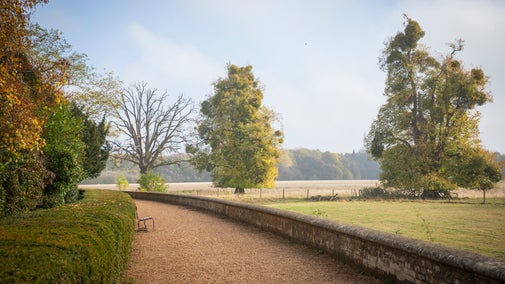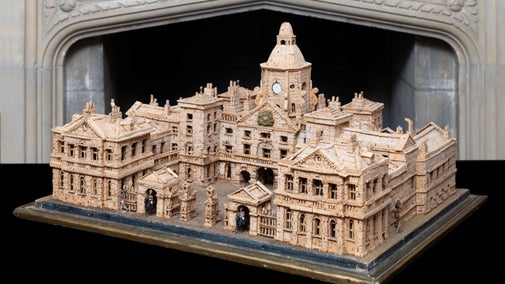
Ickworth's collections
Explore the objects and works of art we care for at Ickworth on the National Trust Collections website.

Ickworth is home to almost a thousand pieces of silver and one of the most important collections of 18th-century silver in Europe. Discover some of the treasures assembled by the 1st and 2nd Earls and 1st Marquess of Bristol.
Following the Napoleonic wars of 1793-1815, Britain experienced a period of agricultural depression. The 5th Earl of Bristol (subsequently the 1st Marquess) gave his tenants in Lincolnshire large rent reductions during this time of economic distress. In gratitude, they commissioned this sterling silver candelabrum from the Earl’s goldsmiths, Rundell, Bridge & Rundell, presenting it to him in 1826. Intricately designed, it is likely the work of Edward Hodges Bailey, a former pupil of the celebrated sculptor John Flaxman.

Cisterns filled with water have been used to cool wine since the 14th century, and whilst these were often made from marble, pewter, copper and brass, some were made from silver. This example, dating from 1680, features an elaborately decorated neck. Placed on the floor at mealtimes, these ornate details would have been visible to those seated at the table.
One of the oldest silver cisterns still in existence
In Britain during the first half of the 18th century, sugar was customarily dispensed from casters as part of the dessert course. The 2nd Earl of Bristol, however, offered one of the first recorded instances of providing sugar in dishes at the table, reflecting Continental tastes. These four sugar dishes were provided as part of the Earl’s ambassadorial allocation to Spain, suggesting that the Spanish were just as fond of sugar as the English.
Silver scallop shells were often used for preparing and serving oysters in the same way that the actual oyster shell is still used in French cuisine. The six scallop dishes in this set, produced around 1756, have no feet to steady the individual shells and as such are a relatively simple example of this form. A contemporary recipe recommends that silver scallop shells like this should be filled with a lump of butter, breadcrumbs, an oyster and some black pepper before being put in the oven or in front of the fire to bake.
These beautifully ornate scissors were developed specifically to cut grape stalks. They feature a right-angled cutting-edge to one blade, which allowed the severed stalk to be held and for the grapes to be carefully placed on the diner’s plate. These originally belonged to the 1st Marquess of Bristol and are made from silver, which has been gilded.

Explore the objects and works of art we care for at Ickworth on the National Trust Collections website.
Discover the house and the treasures collected by the flamboyant 4th Earl of Bristol at Ickworth, a magnificent Italianate palace in the heart of Suffolk.

Learn about the different generations of the Hervey family, and how they each contributed towards creating the Ickworth estate.

Ickworth's garden was the first of its kind in the UK. Designed for privacy, space and freedom, it's a distillation of the gardens of classical Italy given an individual English touch.

There are loads of different family activities designed to help you explore and discover Ickworth Estate. However you choose to spend your day with us, your adventure starts here.

The art and heritage collections we care for rival the world’s greatest museums. Learn more about the collection of paintings, decorative art, costume, books, household and other objects at historic places.

See the breadth of our collection of works of art, furniture and more: we care for around a million objects at over 200 historic places, there’s a surprise discovery around every corner.

Discover the stories behind some of the greatest artworks and artefacts looked after by the National Trust, as told in a dedicated book, 125 Treasures from the Collections of the National Trust.
